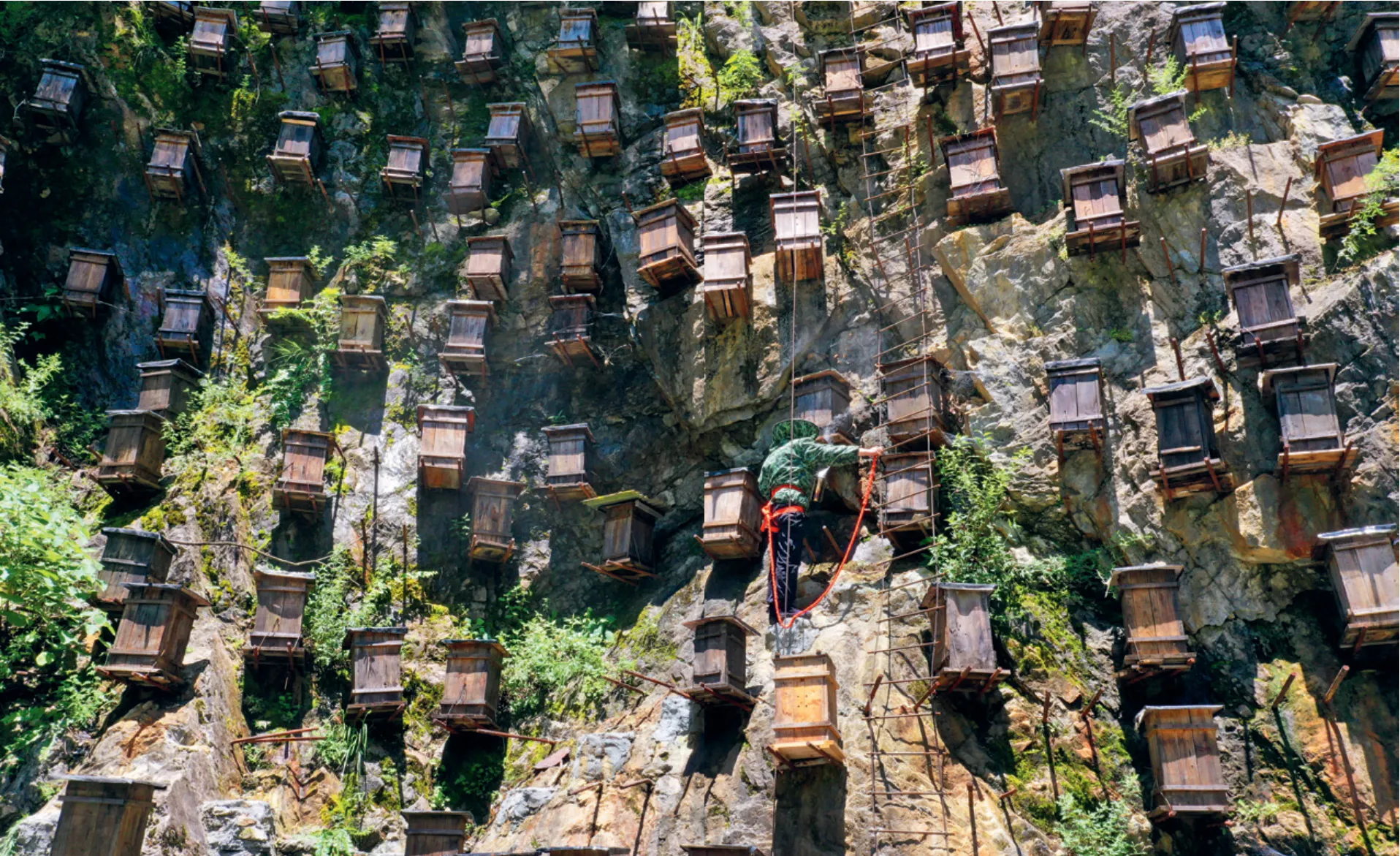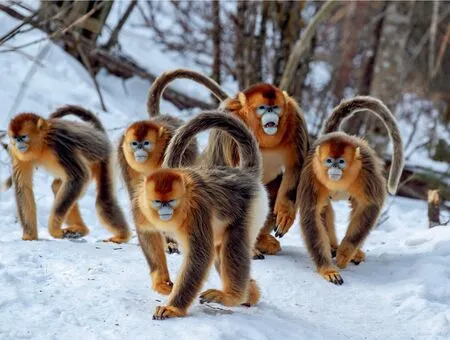A Kingdom of Biodiversity
2022-08-03
Shennongjia boasts such an abundance of species that it has been included in the UNESCO World Biosphere Reserve list. In addition, it is inscribed on the list of Wetlands of International Importance, and is designated as a UNESCO Global Geopark. The local geographical conditions have created an ideal environment for a rich variety of species: it is a buffer zone where different climates and species meet; it has a huge altitude difference; it also has a subtropical forest ecosystem known as “the Earth’s lung,” coexisting with a peat moss wetland ecosystem, or “the Earth’s kidney.” The stable climate and agreeable ecological environment make Shennongjia a sanctuary for various kinds of life.
Within the range of more than 3,000 square kilometers around Shennongjia, almost all representative species from places as far as the regions of Mohe in northeastern China’s Heilongjiang Province, Xishuangbanna in southern China’s Yunnan Province, central Japan in the east, and the Himalayas in the west can be found here. As a result, it has been called the “gene pool” in central China. Records show that some 3,758 vascular plant species and more than 600 species of wild vertebrates can be found here. It is also home to 36 species of wild flora which are under state protection, such as the dove tree, and 75 species of rare wild fauna including the golden snub-nosed monkey and golden eagle. At the same time, it records numerous geological changes in the natural history since ancient times, exhibiting outcroppings dating back to Precambrian, Paleozoic, Mesozoic, and Cenozoic.
In order to protect the natural resources, Shennongjia has been desginated as a national forest park, a national geological park, a national wetland park, and a national nature reserve.sanctuary
The stable climate and agreeable ecological environment make Shennongjia a sanctuary for various kinds of life.

A group of patrol officers of the Shennongjia National Park Administration camping out in the wild while on duty on August 14, 2019.

Workers are collecting honey from beehives at Guanmen Hill Scenic Spot in Shennongjia on July 28, 2020.
Shennong Peak
The gigantic Shennongjia Scenic Area is divided into several parts. A must-visit site is the Shennong Peak, which belongs to the eastern range of the Daba Mountains. It is the highest peak of Shennongjia, and stands 3,106.2 meters above sea level. Also the highest peak of the Daba Mountains, the peak is known as the “ridge of central China.”
Taking into consideration the high elevation of the mountain, an automobile ride is required to reach the top of the peak. While traveling up the mountain, tourists can stop at a 29-meter-high observation tower that was built in 1985. It is used for fire prevention and pest monitoring. A spot to enjoy a panoramic view of the scenic area, people have come to regard it as the best lookout around the Shennong Peak.
Almost every day of the year finds the peak enshrouded in a heavy layer of cloud cover, fog or mist, making it difficult for people to get a clear glimpse of its landscape. Only in summer and autumn, when the sky is clear and the fog has dispersed, can visitors look down from the top of the peak and see the rolling green hills, and trees of various kinds coming up from the ground, creating a lively mountain landscape painting. The sea of clouds, although preventing people from seeing any of the surrounding scenery, makes them feel like they are flying in the sky.
For tourists intending to reach the top of the peak, they must climb a line of stairs. The stone stairs leading to the top of the Shennong Peak are paved with 2,999 marble steps. After one and a half hours, visitors will reach the top. The landscape on the top is different from the dense forests on the hillside and at the foot of the mountain. Here, the ground is covered with rocks and stretches of imposing stone forest. There is no tree, only moss and ferns covering the ground.
Golden Monkey Hill
The Golden Monkey Hill in the Shennong Peak is known as the haunt of golden snub-nosed monkeys. A shuttle bus takes visitors halfway to the top of the hill, and then they have to proceed on foot. Along the way are ravines meandering through ancient forests. There are small waterfalls here and there, vines dangling from the branches of towering trees, and moss-covered rocks emerging out of the water.
After a short tour down from the Golden Monkey Hill, visitors arrive at an animal shelter. Golden snubnosed monkeys living in the shelter are under first-class state protection. Following years of rescue efforts, the number of golden snubnosed monkeys in Shennongjia has risen from 501 in the 1980s to more than 1,470 today.
The National Forestry and Grassland Administration and the Shennongjia Administration set up a research base for golden snubnosed monkeys dedicated to studying the activities of the monkey in the wild and providing necessary help when needed. It took three years for researchers in Shennongjia to be able to feed those creatures in the wild when the monkeys were facing a food shortage. Many difficulties had to be overcome, including arduous trekking in the mountains and sleeping in the forest for days. Field research on the animal was allowed to be carried out at a closer distance without disrupting the habits and lives of the wild monkeys. Apart from the research, 24 special “corridors” were built to facilitate the migration of the monkeys, an effort to enhance population exchange and survival.
Dajiu Lake Wetland
The Dajiu Lake Scenic Spot is a wetland located in the southwestern part of Shennongjia, on the watershed of the Yangtze River and the Hanjiang River. Surrounded by high mountains with a glacial valley in the center, the scenic spot is home to typical subalpine marshes. It awes visitors with its unique glacial terrain and a stunning landscape of alpine meadows. Research shows that the marshes here were formed as early as about 15,000 to 20,000 years ago and have remained intact ever since then.
variety
The ancient Shennongjia is a place with a variety of ecosystems formed by forests, lakes, and mountains.

On a sunny day in spring, February 26, 2022, golden snub-nosed monkeys are hunting for food in groups at the field research base of golden snubnosed monkeys at Dalongtan, Shennongjia National Park in Hubei.
The Dajiu Lake Scenic Spot presents a rarely-seen combination of wetland ecosystem and forest ecosystem, and its unique geological conditions provide the place with more diverse biodiversity. Rare animals, such as golden snub-nosed monkeys, white storks, and golden eagles, thrive here; “living fossil” plants like dove trees and Cercidiphyllaceae took shelter in this site and survived the Tertiary and Quaternary glaciation that led to global biological extinction.
With calm and clear water, the Dajiu Lake lies quietly in the arms of the mountains. On a clear day, the lake appears like a mirror, reflecting a beautiful scene of the sky, clouds, and mountains.
Apart from its breathtaking landscape, the scenic spot functions as an important water source. In order to protect local water resources, fossil fuelpowered buses are prohibited in the scenic spot. Visitors can take environmentally friendly electric carts for sightseeing.
The ancient Shennongjia is a place with a variety of ecosystems formed by forests, lakes, and mountains. Its unique terrains and climate have nurtured rich biodiversity. It is like a natural treasure chest that keeps surprising people with breath-taking beauty and wonders.
